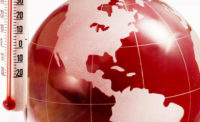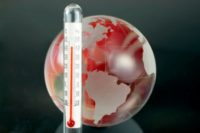 The World Health Organization (WHO) and the World Meteorological Organization (WMO) have published a new atlas that illustrates the most significant challenges of climate change and its effects on health.
The World Health Organization (WHO) and the World Meteorological Organization (WMO) have published a new atlas that illustrates the most significant challenges of climate change and its effects on health.
“Droughts, floods and cyclones affect the health of millions of people each year,” according to a statement released by the WHO. “Climate variability and extreme conditions such as floods can also trigger epidemics of diseases such as diarrhea, malaria, dengue and meningitis, which cause death and suffering for many millions more.”
The Atlas gives practical examples of how the use of weather and climate information can protect public health.
Climate risk management
“Prevention and preparedness are the heart of public health. Risk management is our daily bread and butter. Information on climate variability and climate change is a powerful scientific tool that assists us in these tasks,” said Dr Margaret Chan, Director-General of WHO. “Climate has a profound impact on the lives, and survival, of people. Climate services can have a profound impact on improving these lives, also through better health outcomes.”
Until now, climate services have been an underutilized resource for public health.
“Stronger cooperation between the meteorological and health communities is essential to ensure that up-to-date, accurate and relevant information on weather and climate is integrated into public health management at international, national and local levels. This Atlas is an innovative and practical example of how we can work together to serve society,” said WMO Secretary-General Mr Michel Jarraud.
Links between health and climate
Numerous maps, tables and graphs assembled in the Atlas make the links between health and climate more explicit:
In some locations the incidence of infectious diseases such as malaria, dengue, meningitis and cholera can vary by factors of more than 100 between seasons, and significantly between years, depending on weather and climate conditions. Stronger climate services in endemic countries can help predict the onset, intensity and duration of epidemics.
Case studies illustrate how collaboration between meteorological, emergency and health services is already saving lives. For example, the death toll from cyclones of similar intensity in Bangladesh reduced from around 500 000 in 1970, to 140 000 in 1991, to 3 000 in 2007 – largely thanks to improved early warning systems and preparedness.
Heat extremes that would currently be expected to occur only once in 20 years, may occur on average every 2-5 years by the middle of this century. At the same time, the number of older people living in cities (one of the most vulnerable groups to heat stress), will almost quadruple globally, from 380 million in 2010, to 1.4 billion in 2050. Cooperation between health and climate services can trigger measures to better protect people during periods of extreme weather.
Shifting to clean household energy sources would both reduce climate change, and save the lives of approximately 680 000 children a year from reduced air pollution. The Atlas also shows how meteorological and health services can collaborate to monitor air pollution and its health impacts.
In addition, the unique tool shows how the relationship between health and climate is shaped by other vulnerabilities, such as those created by poverty, environmental degradation, and poor infrastructure, especially for water and sanitation.
The WMO is the directing and coordinating authority for health within the United Nations system. It is responsible for providing leadership on global health matters, shaping the health research agenda, setting norms and standards, articulating evidence-based policy options, providing technical support to countries and monitoring and assessing health trends.






